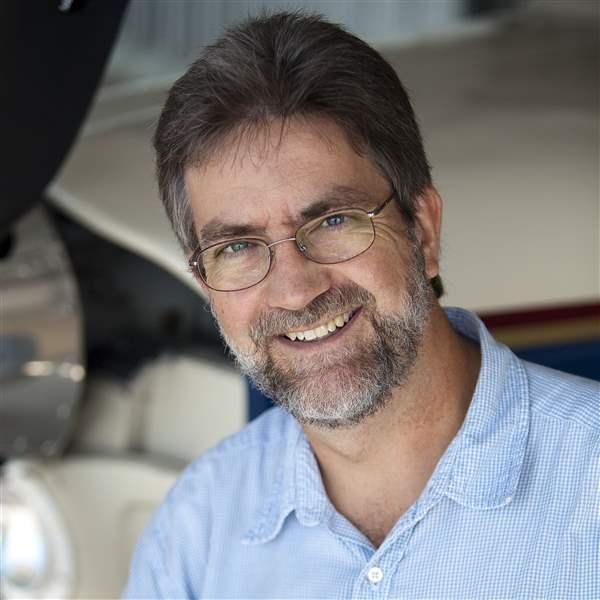Light airplanes offer surprising utility
We try to acknowledge many of the recurring influencers through these pages each month--the adventure that aviation provides, the challenge, the romance of flying. There's another reason, however, that we may not be giving its due. That's the utility of flying in general aviation aircraft. All the fun and adventure aside, there are times when flying ourselves in a light airplane can be the most practical way to get from Point A to Point B. In many cases, even a 120-knot training airplane can get you there faster than the airlines (think about the story of the tortoise and the hare); flying may even be less expensive, especially if you can share the cost with a passenger or two. The biggest benefit, in my opinion, is the ability to set your own schedule--within the limits of the weather and your personal minimums, of course.
General aviation was our choice of transportation for a recent trip from our office in Frederick, Maryland, to Appleton, Wisconsin. Editor in Chief Tom Haines and I made the trip in his Beechcraft Bonanza A36, a high-performance single-engine retractable-gear airplane (his preferred cruise speed is about 160 knots). On our route west-northwest to Appleton we had a 25-knot headwind, and although we could have made the trip nonstop, we chose to make a fuel stop near Lansing, Michigan.
On the trip home, however, that 25-knot wind was on our tail (I usually end up with a headwind both ways on a cross-country trip--just lucky, I guess). Associate Editor Ian Twombly joined us, and we made the flight nonstop in three hours flat. To fly the trip commercially would have required an hour or more at the airport before departure; about an hourlong airline flight to Chicago, Cincinnati, or another airline hub; an hour or more waiting for the connection; another hour or so to fly to Washington or Baltimore--and then it's one more hour driving back to work. Five to six hours if all the flights are on time, but we cut that nearly in half--saving enough time that we could spend half the day in the office.
The trip was less expensive than three airline tickets. And even popular training airplanes can provide cost-effective transportation. Just ask Dennis Flood, who flew his Cessna 172 from Venice, Florida, to South Haven, Michigan, and back (see "Preflight: One Man's Odyssey," September 2008 AOPA Flight Training). Flood said his flight cost $400 each way for fuel, compared to $300 each way if he drove--but he cut his travel time significantly, and said flying was much less stressful.
There are a number of airplanes optimized for cross-country travel. I had the opportunity to take a demonstration flight the other day in a Cirrus SR22, equipped with Cirrus' unique Perspective glass cockpit. Based on the Garmin G1000, the Perspective offers synthetic vision--a GPS-linked database allows the depiction of airports, ground features, terrain, and obstructions on your primary flight display, providing an "outside" view even if you're flying over or through clouds. The Perspective also offers "Highway in the Sky" symbology, which depicts your route as a series of magenta rectangles; just fly the airplane so that it goes through each box and you'll know you're on course. Cirrus airplanes are known for their airframe parachute systems, which give pilots an emergency option in the event of a midair collision, structural failure, or unrecoverable loss of control. The Perspective avionics package offers a new option: Pushing a blue button will activate the autopilot and guide the airplane to a straight-and-level flight path if the pilot becomes disoriented--or simply needs to fold up a sectional chart.
The number of people learning to fly primarily for transportation purposes appears to be increasing, and that makes sense. The quality of airline service has changed a lot over the years, and it seems that new fees for baggage and in-flight services are announced daily (can pay toilets be next?). And now, because of high oil prices and reduced travel demand, commercial flights are being cut to many cities.
Are you learning to fly primarily to get from Point A to Point B? If so, please let us know how we can better help you in your training.
Planning to attend AOPA Expo in San Jose, California, in November? AOPA Flight Training's career columnist, Wayne Phillips, will present "A Flying Career for Me? Really?" at 1:30 p.m. Friday, November 7. He'll also moderate a forum for flight-deck job seekers at 3 p.m. Saturday, November 8. Flight instructors are encouraged to join us for our annual CFI Roundtable, from 11 a.m. until noon Saturday, November 8, in the San Carlos Room of the San Jose Marriott. For more information on Expo, see AOPA Online.
Email Mike Collins, editor of AOPA Flight Training, at [email protected].

